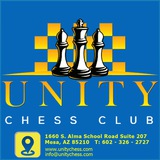34...Kd6 35.Kf3 f5 36.h4 Bb2 37.g4 fxg4+ 38.Kxg4 Nf6+ 39.Kf3 Nd5 40.Bc2 Bf6 41.h5
Unity Chess Club
Georg Seul 2447 Artur Jussupow 2610 Essen rapid 2000 Black to move
White has the advantage of the two bishops, and if he succeeds in completing his development and evicting the knight from d4 with the move c2-c3, he will have a clear advantage. Black should play resolutely, trying to exploit the active position of his pieces.
The idea of this is simple – if the pawn gets to h4, it will weaken the dark squares on the white kingside. On the other hand, if White reacts with h3-h4, he gives Black the square g4. One should also not forget that Black still has queenside castling at his disposal.
The correct reaction was 11.Ne2 Nxe2+! 12.Qxe2 h4 13.Kh2 (13.g4 Nh7 14.c3 Qe7=) 13...Qd7 14.g4 Nh7 15.f4 Qe7 16.Qf3 Nf8, with an approximately equal game.
Helping Black develop play on the dark squares. More sensible was 12.Bd2 h4 13.g4, or 12.Be3, or even 12.Qd2 – after all of these choices, Black has a small advantage.
12.Qd2 Nxg5 13.Qxg5 h4!=/+.
12.Qd2 Nxg5 13.Qxg5 h4!=/+.
Black already has a significant advantage – one only needs to compare the bishops on g2 and c5.
13.Qf3 Qh6 14.Nd5 h4 15.Kh2 c6 16.b4 Bd4 17.c3 cxd5 18.cxd4 Nxd4 19.Qg4 hxg3+ 20.fxg3 0-0 21.Rac1 dxe4
Unity Chess Club
Konstantin Sakaev 2672 Vladimir Potkin 2552 Russia 2005 White to move
White has prepared a possible battery along the b1-h7 diagonal, for which he only needs one bishop move. Now is the time to start softening up the black defences:
Black’s pieces are mobilised, so he tries to find counterplay in the centre. If he allows h4-h5 and the subsequent opening of diagonals, the black knight will have to occupy the passive square f8, whilst 18...h5 would give the white knight an outpost on g5.
